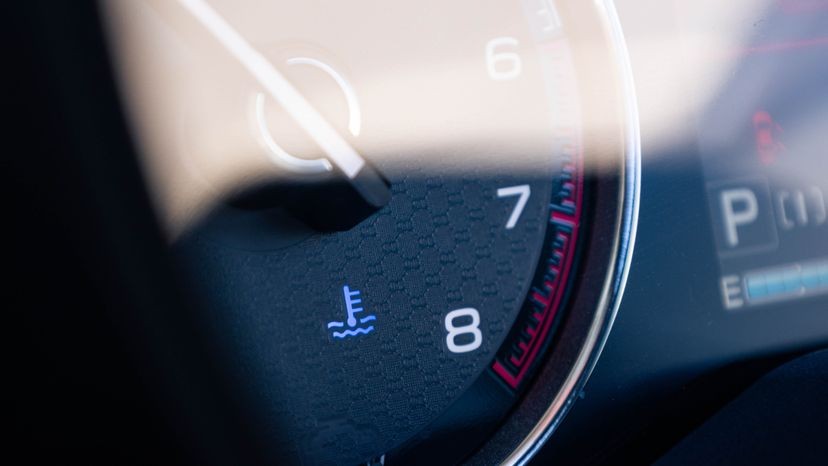A car engine is a complex machine, a symphony of moving parts working in perfect harmony. Within this intricate system, even seemingly small components play critical roles. When considering engine health and efficiency, the question “What Does A Car Thermostat Do” often arises. The answer reveals the importance of this unassuming part.
Designed to be a silent guardian of your engine’s temperature, the thermostat, typically around 2 inches (5 cm) in diameter, is a small valve with a massive responsibility. It’s crucial in preventing your engine from suffering the detrimental effects of both overheating and running too cold.
Understanding the Inner Workings of a Car Thermostat
In every car equipped with a liquid cooling system, the thermostat is strategically positioned between the engine and the radiator. Think of it as a gatekeeper, controlling the flow of coolant and meticulously regulating engine temperature. This control is achieved by acting as a valve that opens and closes based on specific temperature thresholds.
When you first start your car, especially on a cold day, the engine is far from its optimal operating temperature. During this initial phase, the thermostat remains closed. This clever design restricts coolant flow to the radiator, allowing the engine to warm up rapidly to its ideal temperature range. This quick warm-up is vital for reducing engine wear and tear.
 Close up of a car
Close up of a car
Alt Text: Car engine detail showcasing the thermostat location, emphasizing its compact size and crucial position in the cooling system.
Once the engine reaches its designed operating temperature, generally around 200 degrees Fahrenheit (95 degrees Celsius), the thermostat springs into action. It begins to open, allowing coolant to circulate to the radiator. The radiator then dissipates heat, cooling the coolant before it returns to the engine. This continuous cycle, managed by the thermostat, prevents the engine from overheating and ensures it operates within its safe and efficient temperature range.
The magic behind the thermostat’s operation lies in a small cylinder integrated into its engine-facing side. This cylinder is filled with a special wax material that is engineered to melt at a specific temperature, often around 180 degrees Fahrenheit (82 degrees Celsius), although this can vary depending on the vehicle and thermostat design.
A rod, connected to the thermostat valve, is in direct contact with this wax. As the engine temperature rises and the wax reaches its melting point, it undergoes a significant expansion in volume. This expansion forces the rod to push outwards, mechanically opening the thermostat valve and initiating coolant flow to the radiator. This elegant and reliable mechanism is crucial for thermal management within the engine.
Why is a Thermostat Essential for Your Car?
A properly functioning thermostat is not merely a component; it’s a cornerstone of engine health and performance. Its importance spans across several critical areas:
-
Optimized Engine Performance: By diligently maintaining the engine at its ideal temperature, the thermostat ensures that all engine components operate at peak efficiency. This translates to smoother engine performance, better responsiveness, and a more enjoyable driving experience.
-
Enhanced Fuel Efficiency: Engines are designed to operate most efficiently within a specific temperature range. The thermostat plays a key role in ensuring the engine reaches and maintains this temperature, which directly contributes to improved fuel economy, saving you money at the pump.
-
Reduced Harmful Emissions: When an engine operates at its optimal temperature, the combustion process becomes more complete and efficient. This complete combustion minimizes the production of harmful pollutants, leading to reduced emissions and a smaller environmental footprint.
-
Overheating Prevention: Engine overheating is a major cause of severe engine damage. A functioning thermostat is the primary defense against this, ensuring coolant circulation and preventing catastrophic issues like warped cylinder heads, blown head gaskets, and even complete engine failure.
-
Extended Engine Lifespan: By preventing extreme temperature fluctuations and maintaining optimal operating conditions, the thermostat significantly contributes to the longevity of the engine and its vital components. This proactive temperature management can save car owners substantial repair and replacement costs over the lifespan of their vehicle.
Recognizing the Symptoms of a Failing Thermostat
A malfunctioning thermostat can disrupt the delicate thermal balance of your engine, leading to a range of problems. Recognizing the symptoms of a faulty thermostat early can prevent more serious and costly engine repairs. Key indicators include:
-
Engine Overheating: If the thermostat becomes stuck in the closed position, it effectively blocks coolant flow to the radiator. This results in a rapid increase in engine temperature, potentially leading to severe overheating and engine damage.
-
Engine Running Too Cold: Conversely, if the thermostat is stuck in the open position, coolant circulates continuously, even when the engine is cold. This prevents the engine from reaching its optimal operating temperature, leading to reduced efficiency and increased engine wear over time.
-
Erratic Temperature Fluctuations: A thermostat that is failing intermittently or sticking can cause unpredictable engine temperature swings. These fluctuations can confuse the engine control unit (ECU), leading to poor engine performance, reduced fuel economy, and increased emissions.
-
Abnormal Temperature Gauge Readings: Keep a close eye on your car’s temperature gauge. Unusual readings, such as consistently high temperatures or rapid fluctuations, are often the first sign of a thermostat problem. Any deviation from the normal operating temperature should prompt a thorough inspection of the thermostat and cooling system.
-
Increased Fuel Consumption: When the engine operates below its optimal temperature due to a faulty thermostat, the engine management system may compensate by increasing fuel delivery to try and warm the engine. This results in noticeably poorer fuel economy.
If you observe any of these symptoms, it is crucial to have your vehicle inspected by a qualified mechanic. Timely diagnosis and replacement of a faulty thermostat are simple preventative measures that can save you from major engine problems down the road.
Engine Temperature: The Thermostat’s Key Responsibility
The thermostat, despite its small size and relatively low cost, is an indispensable component of any modern vehicle’s cooling system. By precisely regulating engine temperature, it acts as a silent guardian, ensuring optimal performance, reducing harmful emissions, and preventing potentially catastrophic engine damage.
Regular vehicle maintenance should include checks of the cooling system, and timely replacement of a faulty car thermostat is a vital practice for any car owner who wants to maintain their vehicle’s health, efficiency, and longevity. Understanding “what does a car thermostat do” is the first step in appreciating its crucial role and ensuring your car runs smoothly for years to come.

